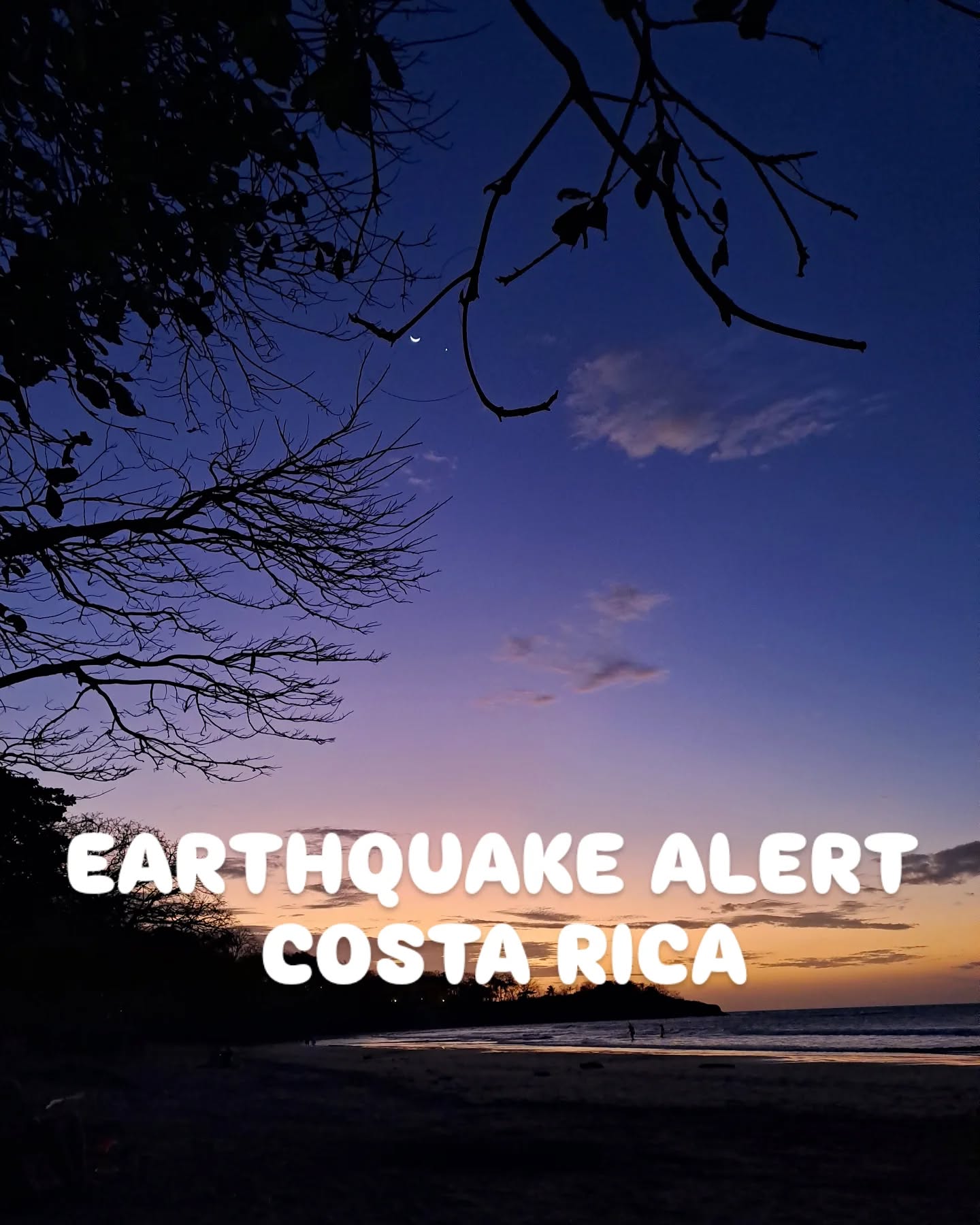Costa Rica is a country known for its stunning landscapes, rich biodiversity, and vibrant culture. However, it is also located in a seismically active region, making earthquakes a common occurrence. Understanding the nature of these earthquakes, their causes, and how to stay informed is essential for residents and visitors alike.
The Seismic Landscape of Costa Rica
Costa Rica sits on the Pacific Ring of Fire, an area known for its high levels of tectonic activity. The country is primarily affected by the interaction of the Cocos and Caribbean tectonic plates. This interaction leads to frequent seismic activity, including earthquakes and volcanic eruptions. While many of these earthquakes are minor and go unnoticed, some can be felt by the population, depending on their magnitude, depth, and proximity to populated areas.
OVSICORI: Your Source for Earthquake Information
To stay informed about seismic activity in Costa Rica, the National Seismological Network, known as OVSICORI (Observatorio Vulcanológico y Sismológico de Costa Rica), is an invaluable resource. OVSICORI monitors and reports on earthquakes, volcanic activity, and other geological phenomena in the country. Their website provides real-time data on seismic events, allowing residents and visitors to stay updated on any significant activity. You can access daily earthquake reports here.
Common Earthquake Experiences
Earthquakes in Costa Rica are quite common, but most of the time, they are too small to be felt. The majority of seismic events register low magnitudes, often below 3.0 on the Richter scale, which means they occur without causing any noticeable effects. However, when an earthquake is stronger or closer to populated areas, it can be felt by residents. The depth of the earthquake also plays a crucial role; shallower earthquakes tend to be felt more strongly than deeper ones.
Today’s Experience: Earthquake on February 18th, 2025
On February 18th, 2025 at 2:40pm, a notable earthquake measuring 4.3 on the Richter scale occurred 17 km southwest of Tamarindo, Guanacaste. This earthquake was classified as a subduction event, which is common in the region due to the tectonic activity between the Cocos and Caribbean plates. The earthquake’s coordinates were 10.1814 latitude and -85.7425 longitude.
Residents in nearby areas, including Santa Cruz, Cartagena, Belén, Nicoya, Huacas, Nosara, Tamarindo, Brasilito, and Villarreal, reported feeling this earthquake. While a magnitude of 4.3 on the Ritcher scale is significant enough to be noticed, it is still considered a moderate earthquake, and most buildings in Costa Rica are designed to withstand such events.
I definitely felt it —a very strong and short shake that put me on my feet, waiting for the following tremors (which, in this occasion, didn’t come). It actually reminded me of the Nicoya earthquake, which occurred on September 5th, 2012 at 8:42 a.m. This earthquake registered a magnitude of 7.6 on the Ritcher scale and was centered in the Nicoya Peninsula, prompting a tsunami warning that was later canceled. The initial tremor was a quick and powerful shake, followed by a more prolonged and intense shaking that lasted about 5 minutes. This experience left many residents shaken, both literally and figuratively, as they recalled the potential dangers associated with such seismic events.
Tsunamis and Earthquake Protocols
While most earthquakes do not lead to tsunamis, significant seismic events, especially those occurring under the ocean, can trigger these dangerous waves. Costa Rica has a tsunami warning system in place, and residents are encouraged to be aware of evacuation routes and safety protocols. In coastal areas, you will often see signs indicating evacuation routes, guiding residents and visitors to higher ground in the event of a tsunami warning.
The protocol for tsunami evacuation is clear: if you feel a strong earthquake that lasts for more than 20 seconds, it is advisable to move to higher ground immediately, as this could indicate a potential tsunami. Local authorities regularly conduct drills and provide information to ensure that residents are prepared for such emergencies.
Additionally, Costa Rica has strict building codes designed to ensure that structures can withstand seismic activity. These regulations require that buildings be constructed with materials and techniques that enhance their resilience to earthquakes, helping to minimize damage and protect lives.
Conclusion
Living in a seismically active region like Costa Rica means being prepared for the possibility of earthquakes. While many seismic events go unnoticed, understanding the nature of these occurrences and staying informed through resources like OVSICORI can help residents and visitors feel more secure. By being aware of the seismic landscape and knowing how to respond in the event of an earthquake, you can enjoy all that Costa Rica has to offer while staying safe.
Pura Vida,
Tico Be Like
